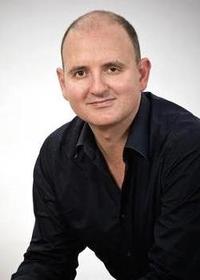Populous Activate- helping brands engage with sport and entertainment customers- Richard Breslin
July 25, 2012
Sponsorship activation received its very own ‘how to’ guide with the agreement between AEG and O2 in 2005 for the ‘naming rights’ sponsorship of the venue formally known as the Millennium Dome. Populous Activate was born at this time in recognition of the shift we had witnessed in sport and entertainment architecture, and the influence sponsorship had on every aspect of our projects. In this month’s column, my colleague in London, Senior Principal, Nicholas Reynolds outlines what we’re doing with Populous Activate.
Sponsorship activation around O2 Arena showed that brands no longer sought static advertising within our venues. Simply ‘badging’ buildings with a logo was not enough to achieve the goal of connecting with each customer. Brand Activation represented a desire in companies to place digital, events and social media at the heart of brand activity and, in doing so, replace traditional advertising. This was an approach summed up perfectly by Simon Pestridge of Nike UK, when quoted in his Revolution magazine, ‘We don’t do advertising anymore. We just do cool stuff’.
At its most basic level the role of Populous Activate is simply to help brands within the Sports and Entertainment world engage with their customer base, ensuring that fans leave an event having had a unique experience in whole or in part which they attribute to the sponsor involvement.
Our unique position is that we underpin the approach of a creative consultancy with an in depth understanding of sports architecture and event design. We understand the requirements of all those involved – the fan, the owner and the sponsor. Therefore we can deliver unique solutions, to satisfy the objectives of all parties. The key to Brand Activation is ensuring the architecture and its surrounds can accommodate the volume of brand activity without detrimental overlap or visual noise. In a destination such as the O2 Arena, the client is seeking to deliver collateral, not just to the ‘naming rights’ partner, but also to 10 founding partners and nearly 100 suite holders.
Within sports, there is the unique requirement to define and protect the brand DNA of the sports teams themselves. With football clubs striving to meet financial fair play rules, a common reference is often made to ‘optimising global revenue streams’, and this objective hinges upon their brand value. The scale of this challenge and opportunity is illustrated by market leader Manchester United FC, which has an estimated 659 million followers and commercial partners in 72 countries.
At the heart of the sporting brand lies the stadium or arena, which in new world brand terminology is defined more succinctly as “the destination”, because the opportunities that exist to provide an engaging fan experience lie both within the venue and, just as importantly, outside along the spectator journey.
Our approach focuses on the utilisation of space to unlock its experiential and commercial potential. The footfall which accompanies a major stadium is composed of a variety of differing users each embarking on a route to a destination, along which we are able to create a series of activation ‘touch points’. Through a series of interventions we can significantly influence and enhance the overall destination experience both on arrival and departure. The nature of these touch points, can vary dramatically from (at the most basic level) logos applied to wayfinding along the route, to time based presence on LED screens, pop up retail, and sponsored live concerts. Engagement can be through permanent or temporary installations and, increasingly, through targeted digital engagement via social media platforms and augmented reality applications or ultimately a combination of all of this.
The extent of Brand influence upon the environments in which we experience sport and entertainment is illustrated by the varied extent of our work. This includes optimization of bars, lounges and VIP arenas within venues; applying the DNA of a brand, such as O2, to an entire arena focused destination; transforming facades of major stadia to act as canvases for new content; or applying the identity of brands, such as Cadbury, to the London 2012 Olympics within strict IOC guidelines. The scope is ever changing and requires increasingly innovative solutions.
Most recently we have found ourselves fulfilling the Red Bull mantra of ‘creating ideas that can be advertised’ with the work we have recently completed for Santander. The market now has evolved into branding ‘virtual events’. To meet this demand, we created a virtual London F1 street circuit, which when visualized, modeled and fed into an F1 simulator formed the backbone of Santander’s summer F1 advertising campaign. Drivers, Jenson Button and Lewis Hamilton, were filmed competing on the circuit around London’s most famous architectural landmarks.
With space ever at a premium the need to extend brand platforms further into the digital world continues apace as we strive to meet the objective of the Global Sports Brands, by connecting their fan base to the match day experience and meeting the modern challenge of fitting ‘659 million fans into a stadium’.
About Richard Breslin:
Richard is a Senior Principal at Populous and is part of the management team of the Brisbane office. Richard is responsible for all of the firm’s projects in New Zealand and Australia.


